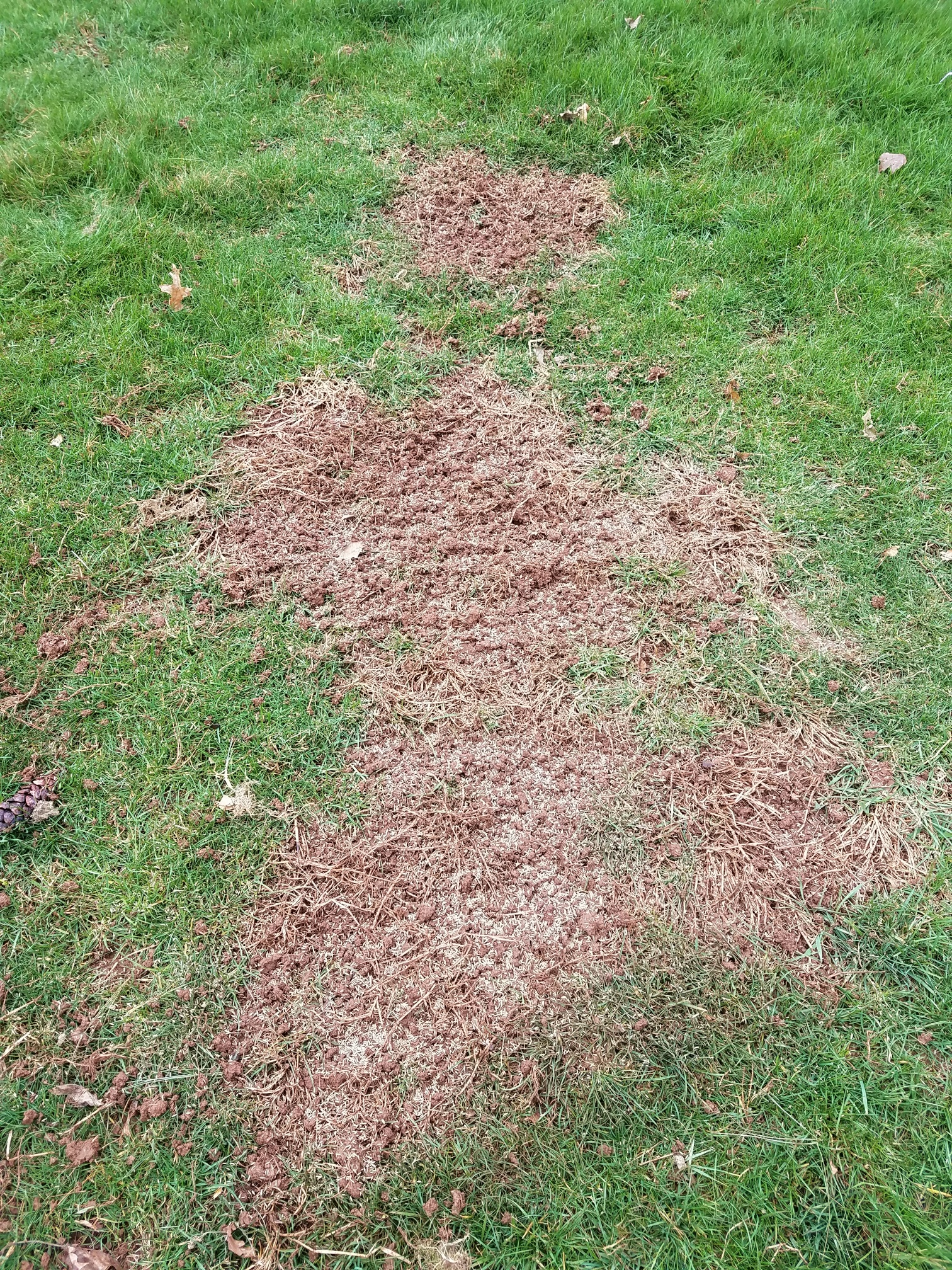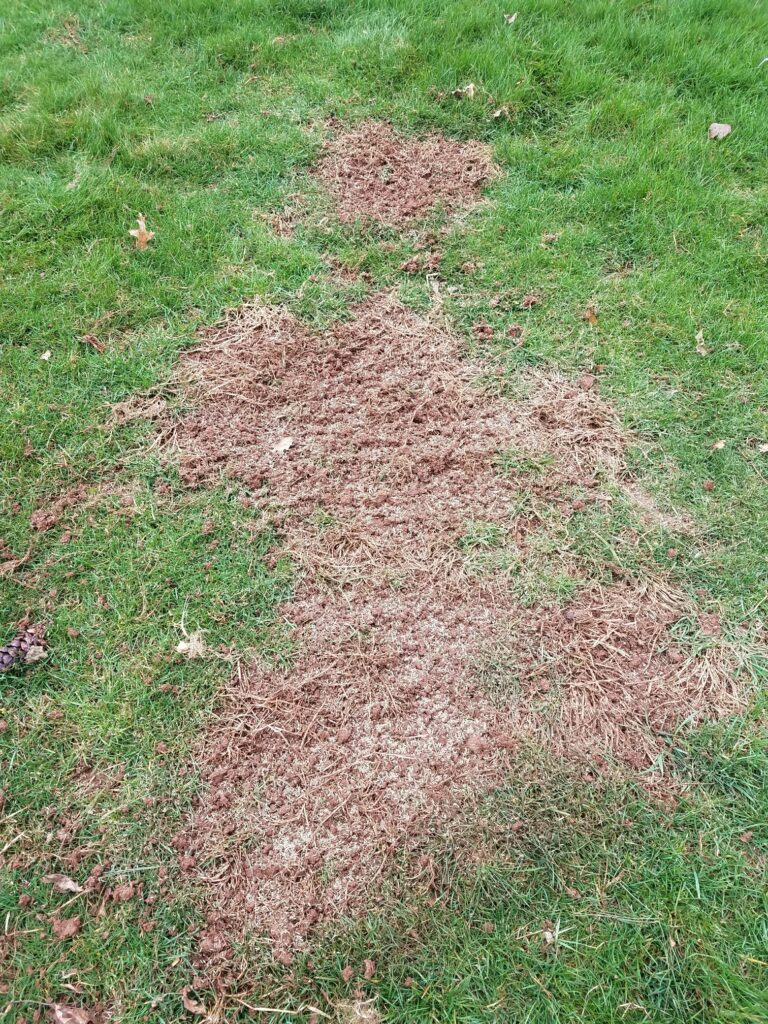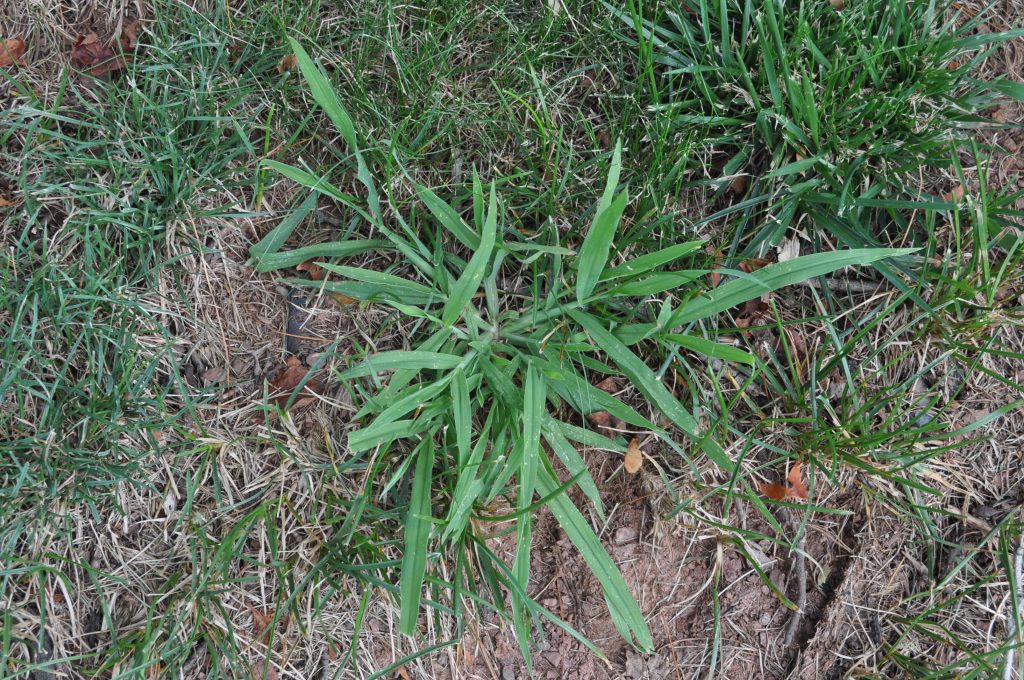Things to know before you seed this Spring

Spring is finally here! It’s time to get outside and enjoy the nicer weather. One common activity for most homeowners is doing a spring clean-up around the yard. This is also when most people notice the bare areas of turf and decide it’s time to do some spring seeding. Spring seeding has its place, but it’s important to have real expectations and understand the potential long-term issues before spending your time and money on seeding your lawn early in the season.

Broadleaf Weeds
Lots of plants are actively growing in the spring, including broadleaf weeds! When you decide to seed in the spring, the grass plants are going to be actively competing with weeds for places to germinate and grow. Once you seed, it’s not a simple process of just spraying the weeds to kill them, the young immature grass plants will not be strong enough to withstand weed control and survive. Most weed control products recommend waiting until you’ve mowed the new grass 3 to 4 times before applying the product. You’re forced to wait until the grass plants and the weeds mature before you can spray the weeds. If you have aggressive weed growth, you may have to touch up seed those areas after you control the weeds.
Since we’re talking about weeds, lets discuss the tiny crabgrass seeds that are lying dormant in the soil, just waiting for temperatures to warm up enough so they can germinate. Although crabgrass won’t be actively competing with your young grass plants in the spring, it will start to encroach a little closer to summer.
Prior to crabgrass germination, we typically apply a crabgrass pre-emergent product in the spring. Most of these products not only control crabgrass, but also kill your young grass plants. If you plan on seeding, you will have to avoid applying crabgrass pre-emergent in the seeded areas if you want any of the new plants to survive!
During the summer months, when a lot of the cool season grasses go dormant, crabgrass becomes a major issue and can take over sections that you seeded in the spring. All the time and money spent will have provided nice short-term results, but long term you will need to seed again in September.

Can you still prevent crabgrass?
If you really need to seed and a crabgrass pre-emergent was already applied or you want to have one applied, there are options. If the crabgrass pre-emergent was already applied, you can add a few inches of fresh topsoil to the areas you want to seed. This will allow the plants to germinate and grow before hitting the pre-emergent layer in the existing soil.
The other option is to use a pre-emergent product that is safe to use on new seed. We have found these products are not as effective, but it is an option you can try. If you go this route, please make sure you read the label and application instructions completely before applying the product. Timing and quantity of product are extremely critical when dealing with newly seeded areas.
Working with the Weather
The final concern with spring seeding has to do with the weather, which is completely out of our control. In the Northeastern United States, cool-season grasses are the dominant varieties used, and as the name suggests, they prefer cooler temperatures. A mature grass plant is going to be much more resilient and stress tolerant than a plant that was recently planted and doesn’t have a fully developed root system. We want our new plants to grow as much as they can before summer arrives and temperatures start rising, making it stressful on turf.
Also, spring snowfall, which has happened to us in recent years, makes it even more difficult by shortening the growing season before summer and cooling the soil temperatures, delaying germination even more. Even if you do everything perfect in the spring and your new grass plants are looking great before the summer, stressful weather conditions are ahead, and the plants are still very vulnerable.
High temperatures and drought are extremely difficult on younger plants and they might not survive. In addition to the high temperatures, the summer is also when most lawn diseases are active. An immature plant is more susceptible to disease and more likely to be killed by the disease when compared to a mature plant. For more information on minimizing turf disease, click here to read our blog.
There’s still hope for seeding
If you’re still reading this blog, I want to let you know successful spring seeding is possible, it might need a little extra care depending on the weather. Watering correctly to help reduce stress and potentially using a fungicide to minimize disease impacts increases your odds of success. If it can wait, seeding in late August through September is preferred in our region. You will have less competition from other weeds, crabgrass will be near the end of its life cycle, the most stressful weather has typically passed, and cooler fall temperatures are right around the corner. Make sure you don’t wait too long in the fall; germination stops quickly when soil temperatures get too cold. Late August through the month of September is a great window to seed.
Conclusion
Now that you are aware of the potential limitations with spring seeding, you can make the best decision for your specific situation. A lot of times, you don’t have a choice and spring seeding is necessary, at least now you know what to look for and expect long term. If you’re in our service area and have questions about seeding, feel free to contact us at 908-281-7888.




